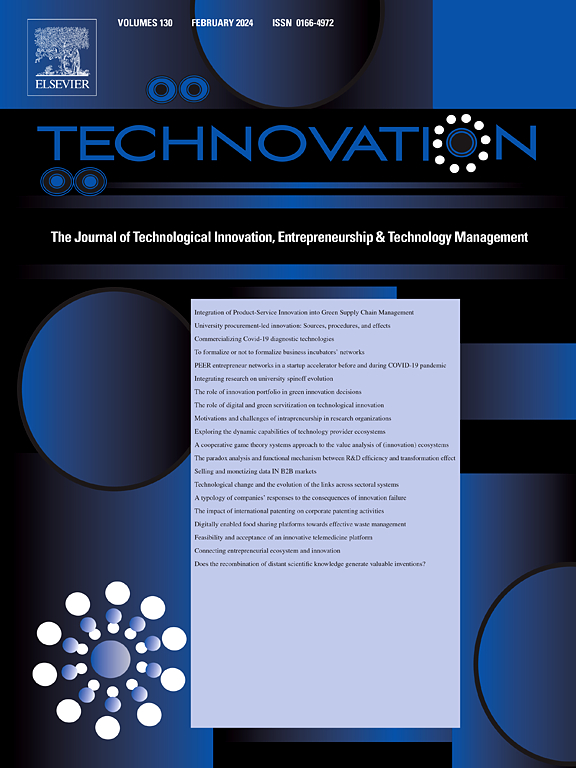Dominant design selected by users: Dynamic interaction and convergence of users
IF 10.9
1区 管理学
Q1 ENGINEERING, INDUSTRIAL
引用次数: 0
Abstract
Dominant design is ultimately shaped by market forces, and users serve as the primary driver. Previous research has revealed that dominant design is a turning point for innovation phases and firm survival. While existing research has examined dominant design from the vantage point of technology, institution, or other market factors, there remains a dearth of studies that delve into the user-driven perspective on dominant design, in which users have presented significant value in the digital era. As user-driven innovation becomes increasingly prevalent, it is impossible for dominant design to avoid the influence of users. Therefore, exploring dominant design must incorporate a user-driven perspective to account for the active agency users hold in the digital era. In this article, we develop a dynamic user interaction model to elucidate how users drive the emergence of dominant design. Specifically, leveraging simulations, we modeled a spectrum of evolution pathways for user preferences, reflecting the complex interaction environments arising from digitalization. The simulations illustrate how dominant design emergences hinge on individual micro-level interactions in undifferentiated competition, grounded in opinion dynamics theory. The results indicate that interaction dynamics, sequence, and frequency disrupt the equilibrium of undifferentiated competition, increasing the likelihood of occasional events leading to a dominant design in this context. This study aims to shed light on the proactive role of users in affecting the dominant design and the subsequent generation of new user values stemming from it.
用户选择的主导设计:用户的动态交互和融合
主导设计最终是由市场力量塑造的,用户是主要的驱动力。先前的研究表明,主导设计是创新阶段和企业生存的转折点。虽然现有的研究从技术、制度或其他市场因素的角度考察了主导设计,但从用户驱动的角度深入研究主导设计的研究仍然缺乏,其中用户在数字时代表现出了重要的价值。随着用户驱动创新的日益盛行,主导设计不可能不受用户的影响。因此,探索主导设计必须包含用户驱动的视角,以解释用户在数字时代所拥有的活跃代理。在本文中,我们开发了一个动态用户交互模型来阐明用户如何推动主导设计的出现。具体来说,利用模拟,我们模拟了用户偏好的进化路径,反映了数字化产生的复杂交互环境。这些模拟说明了主导设计的出现是如何依赖于基于意见动力学理论的无差别竞争中的个体微观层面的相互作用的。结果表明,交互动态、顺序和频率破坏了无差别竞争的平衡,增加了在这种情况下导致主导设计的偶然事件的可能性。本研究旨在阐明用户在影响主导设计以及由此产生的新用户价值方面的积极作用。
本文章由计算机程序翻译,如有差异,请以英文原文为准。
求助全文
约1分钟内获得全文
求助全文
来源期刊

Technovation
管理科学-工程:工业
CiteScore
15.10
自引率
11.20%
发文量
208
审稿时长
91 days
期刊介绍:
The interdisciplinary journal Technovation covers various aspects of technological innovation, exploring processes, products, and social impacts. It examines innovation in both process and product realms, including social innovations like regulatory frameworks and non-economic benefits. Topics range from emerging trends and capital for development to managing technology-intensive ventures and innovation in organizations of different sizes. It also discusses organizational structures, investment strategies for science and technology enterprises, and the roles of technological innovators. Additionally, it addresses technology transfer between developing countries and innovation across enterprise, political, and economic systems.
 求助内容:
求助内容: 应助结果提醒方式:
应助结果提醒方式:


